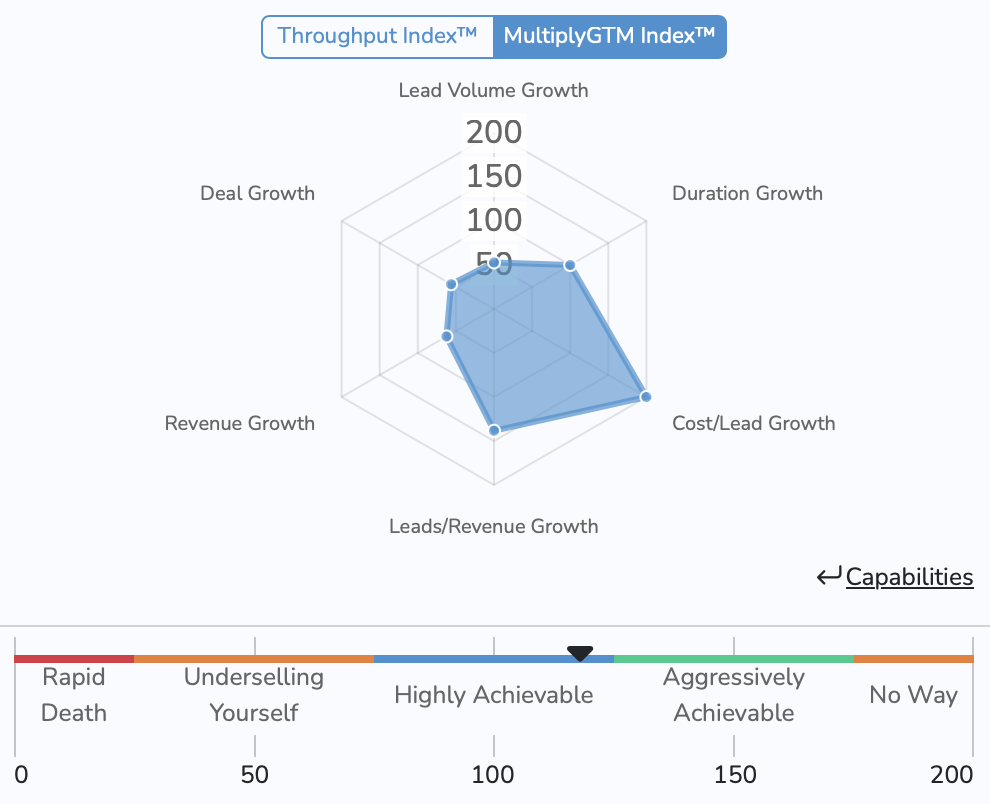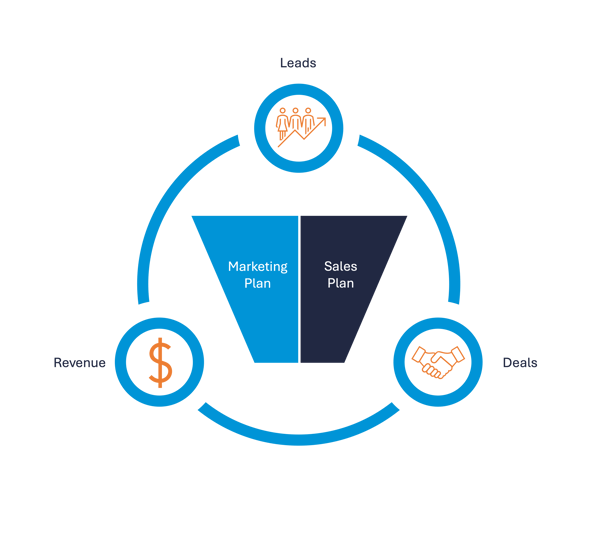Read the MultiplyGTM Index™ white paper
Learn more about how your revenue growth path can actually be measured and scored.
Introducing the first ever measure of a GTM plan's growth aspiration.
Determining how to achieve your revenue plan is difficult to quantify. Achievability is less about the enormity of the goal but instead, the magnitude of the jump from your current performance to your desired outcome. The MultiplyGTM Index™ solves this challenge by scoring your plan's growth trajectory. Use this index to refine and optimize the most achievable GTM plan.
The MultiplyGTM Index™ measures how much growth your goal represents as well as how much acceleration or further investment is required. It measures how big a leap your goals and plans are from your current capabilities and performance.

The MultiplyGTM Index™ is built upon four impact drivers. These drivers are automatically calculated when building a MultiplyGTM plan. These are then combined into an overarching index score.
Get these impact drivers wrong or fall short in their execution and your goal will likely not be achieved.
Use your score to help optimize your GTM plan ensuring the highest chance of execution success.
Lead and deal volume is arguably the biggest impact driver on your revenue number. "The more leads, the more deals" kind of thing.
This is where the top-down versus bottom-up mentality comes into play.
The top down approach starts with your top-of-funnel lead volume and walks down the funnel, accounting for lead conversion rates all the way to the bottom of the funnel. From this, based on a given number of leads, you can forecast how much revenue you will generate.
Bottom up works in reverse. Based on a given revenue goal, you walk up the funnel to the top, calculating how many leads you will need to support your goal.
MultiplyGTM uses a blended approach. A bottom up calculation is firstly run to determine required lead volume to support your goal. From there, those leads are then time-phased to support your quarterly sub-goals. This defines your marketing plan - march to this volume of leads and your sales team will hit their goal...
Walking the funnel in reverse, from top to bottom, MultiplyGTM can determine required deal volume (accounting for product offerings and sellers quotas). This becomes your sales plan.

What is unique and so powerful about this closed loop approach, is that your resultant GTM plan is one that is built upon total alignment between your sales and marketing organization and is also optimal from a 'lead to deal to revenue' conversion efficiency perspective as well.
Every lead experiences a journey from start to end. We call that journey the customer acquisition journey (CAJ). Is is the total time is takes for a lead to convert from initial creation to close (ideally a closed-win state!).
CAJ time can vary depending on many factors and leads within your model each may carry differing CAJ times. Knowing the lead-time required to support revenue wins is key to ensuring revenue is delivered at the correct point in time.
The MultiplyGTM model helps optimize lead journey time, resulting in the most time-efficient path to revenue growth.
Looking beyond just lead volume and velocity, understanding how much value each lead carries (as well as cost per lead) is incredibly useful when optimizing a GTM plan.
MultiplyGTM helps determine which offerings, locations and sellers are the most cost effective revenue-generating engines in your organization.
Hitting a goal is one thing, but we should also consider what it takes to get there. Our efficiency. The most common form of lead efficiency is lead conversion rate. How many leads does it take to generate a win? How much value does each lead carry?
MultiplyGTM can pinpoint specific stage inefficiency, such as MQL to SQL drop-off, helping you optimize your plan.
Learn more about how your revenue growth path can actually be measured and scored.